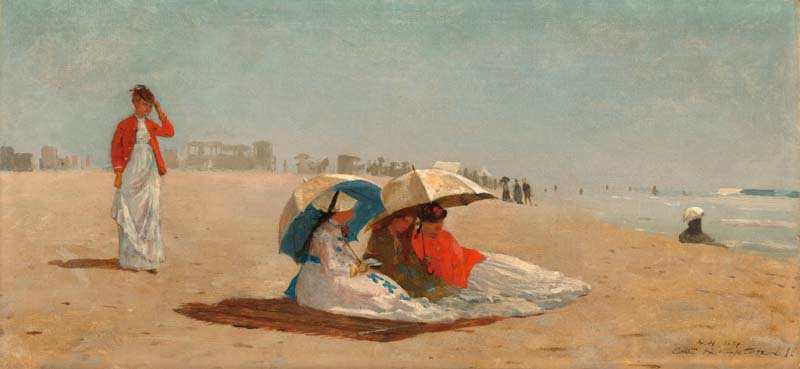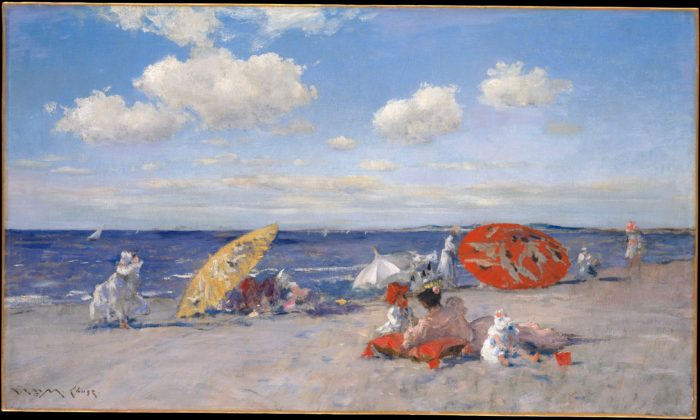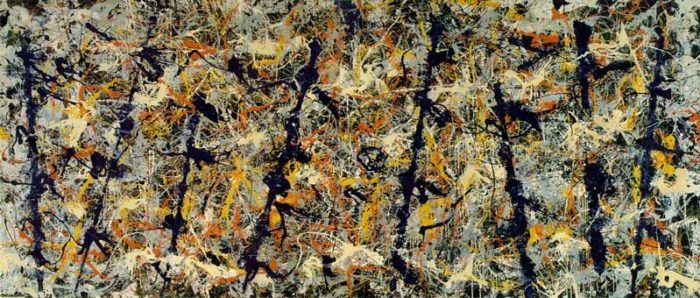More Than a Century of Artists’ Colonies in the Hamptons
Jackson Pollock, Mark Rothko, Willem de Kooning, and other seminal figures of abstract expressionism are the artists most closely associated with the Hamptons. But painters and sculptors flocked to the area well before the mid-20th century.
Members of the New York-based Tile Club discovered the natural beauty and relative isolation of the Hamptons in the late 1870s. To promote what was at the time a little-known destination, the Long Island Rail Road invited 11 members, including William Merritt Chase and Winslow Homer, to ride out to the Hamptons and create works to be used in the railroad’s promotional materials.
This rail trip was not Homer’s first foray to the Hamptons. He had painted scenes in the area several years prior. For his part, Chase was so taken with the Hamptons that in 1891 he opened Shinnecock Hills Summer School of Art, where he taught for 11 years and championed plein air painting. Chase and his family’s nearby summer home was built for them by another member of the Tile Club, famed architect Stanford White.
Chase was not the first artist to build a Hamptons home. Though he is best known for his landscapes of the American West—a mountain in Wyoming’s Grand Teton National Park is even named after him—Thomas Moran and his wife, printmaker Mary Nimmo Moran, built a home and studio in East Hampton in 1884. They spent about half of the year here until their deaths, Mary’s in 1899 and Thomas’s in 1926.
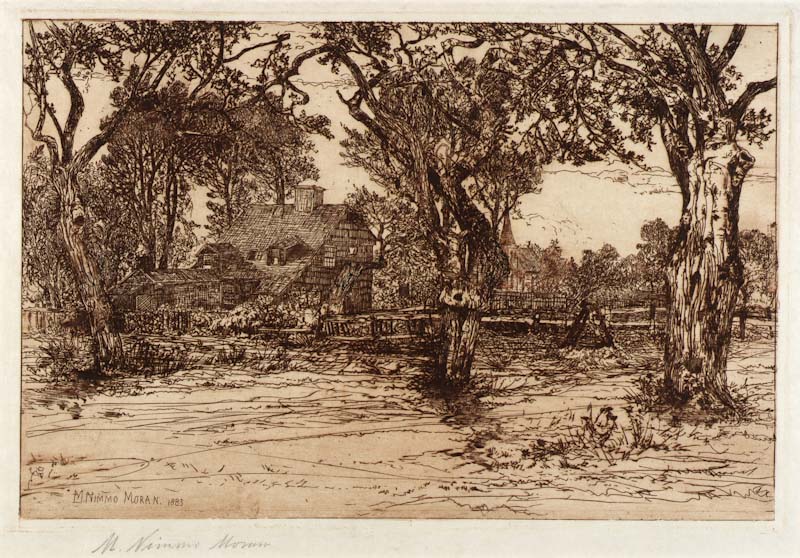
“My Neighbor’s Home—East Hampton” (1883) by Mary Nimmo Moran. Image: Smithsonian American Art Museum
During the following decades a handful of other artists made the Hamptons their part-time home. The most notable was impressionist Childe Hassam, who bought a home in East Hampton in 1919 from the widow of fellow impressionist Gaines Ruger Donoho. During the last few days of his life, in 1935, he had an ambulance transport him from his Manhattan home so that he would die in the East End.
The Depression and the subsequent turmoil in Europe led a group of émigré artists to form the Hampton Bays Art Group. David Burliak, considered by many the “father of Russian futurism,” discovered the charms and affordability of Hampton Bays in 1941 and bought a home there, adding a separate studio building, and he continued to live at least part-time in the Hamptons until his death in 1967. His friends and fellow artists Nicolai Cikovsky and brothers Moses and Raphael Soyer established summer residences in the Hamptons as well, with other artists including Arshile Gorky and Milton Avery joining them periodically.
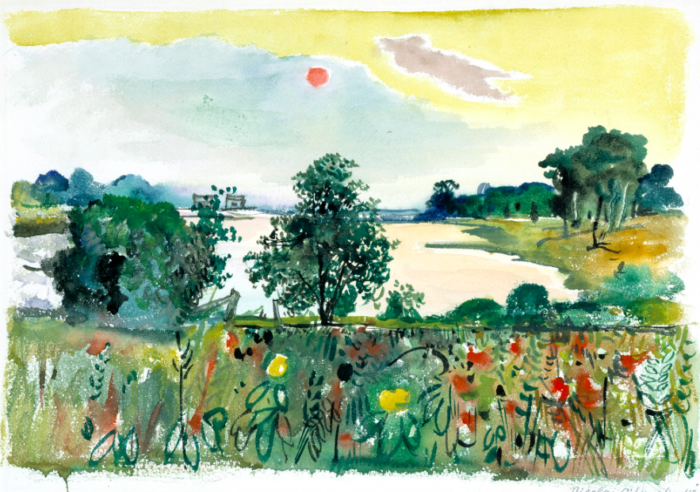
“(Landscape with Animated Foreground)” (1943) by Nicolai Cikovsky. Image: Smithsonian American Art Museum
At around the same time, another group of European artists were creating their own colony in East Hampton. Americans Gerald Murphy, who had worked as an artist in the 1920s, and his wife, Sara, had spent much of the interwar period on the French Riviera, serving as the inspiration for Dick and Nicole Diver in F. Scott Fitzgerald’s “Tender Is the Night” while befriending modernist and surrealist artists including Marc Chagall, Fernand Léger, and Salvador Dalí. When the Murphys returned to Sara’s family home in East Hampton, the Dunes, in the 1930s, they invited their artist friends to view it as a safe haven from the war in Europe. Art patron Peggy Guggenheim also encouraged a number of European artists, including Max Ernst (whom she married in 1941) and Enrico Donati, to take refuge in the area as well.
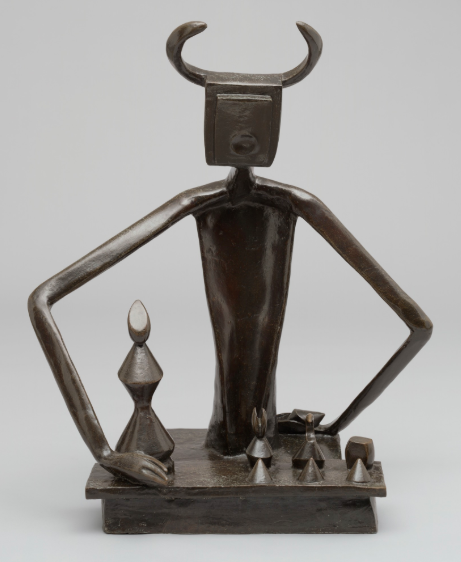
“The King Playing with the Queen” (1944) by Max Ernst, which he created from found objects while living in the Hamptons. Image: MoMA
Guggenheim was also largely responsible for the subsequent influx of artists to the Hamptons. In 1945 she loaned Jackson Pollock and Lee Krasner the money for a down payment on a house in Springs, a hamlet in East Hampton. Pollock created his most famous “poured” paintings, including “Autumn Rhythm,” “Blue Poles,” and Convergence,” here. Robert Motherwell also bought a property in East Hampton that year, though he sold it and left the Hamptons in 1952. Friends of the three artists, such as Willem and Elaine de Kooning and Mark Rothko, came to visit before buying places of their own.
By 1954, enough artists were spending summers in the Hamptons to challenge the area’s writers to a softball game, launching East Hampton’s annual Artists & Writers game. Willem de Kooning and fellow abstract expressionist Franz Kline were among the artists playing in the inaugural game.
Pop artists Roy Liechtenstein and James Rosenquist lived in East Hampton at least part of the year beginning in the 1960s; Chuck Close, David Salle, Eric Fischl, Ross Bleckner, Cindy Sherman, and Keith Sonnier were among those who followed, though by the end of the 20th century many artists could not afford to move to the Hamptons until they were already established.
Nonetheless, hundreds of artists, known and unknown, continue to spend summers or the entire year in the Hamptons, enticed by the diverse landscapes and the singular quality of the daylight. Even if every artist suddenly fled, an artist colony would remain: Artist Colony Lane, in Southampton.



